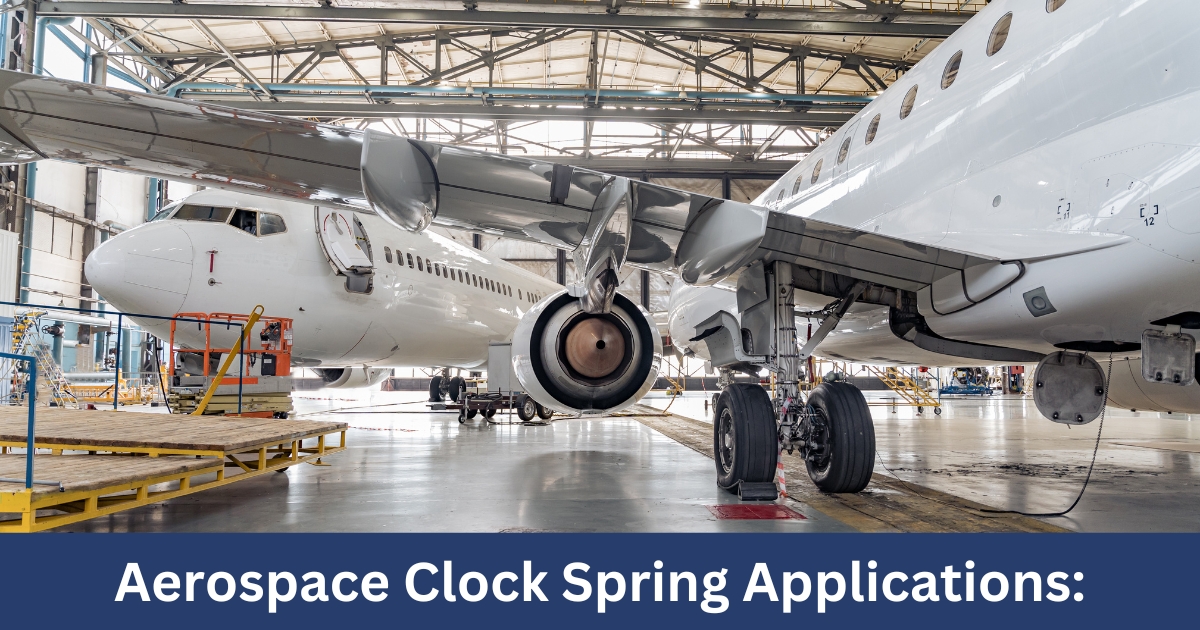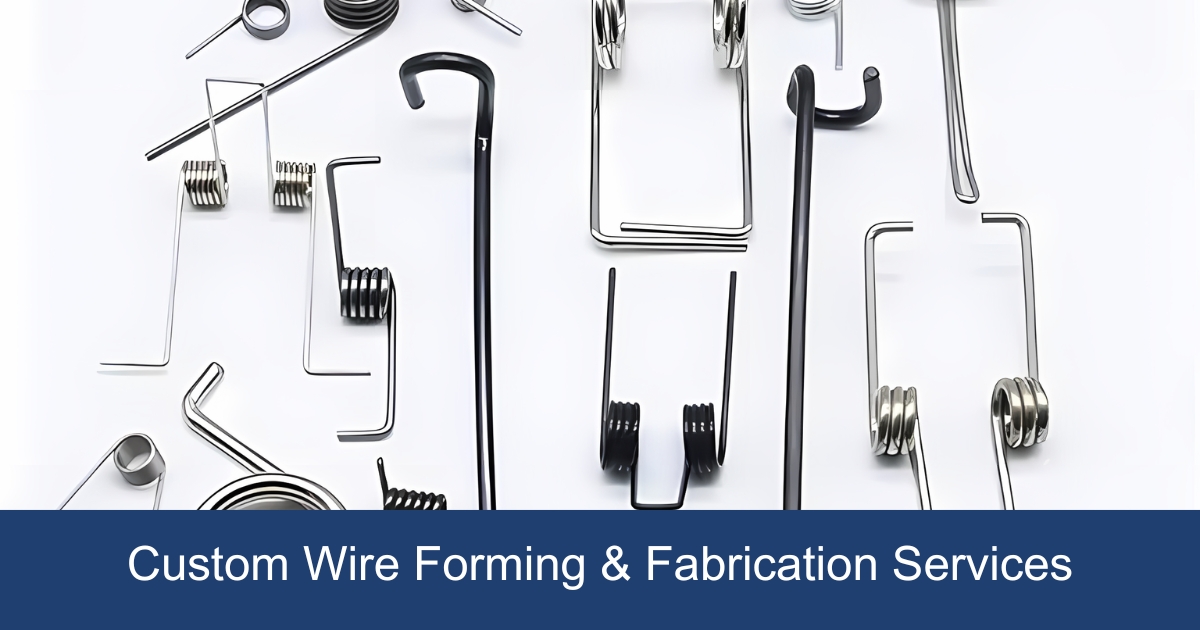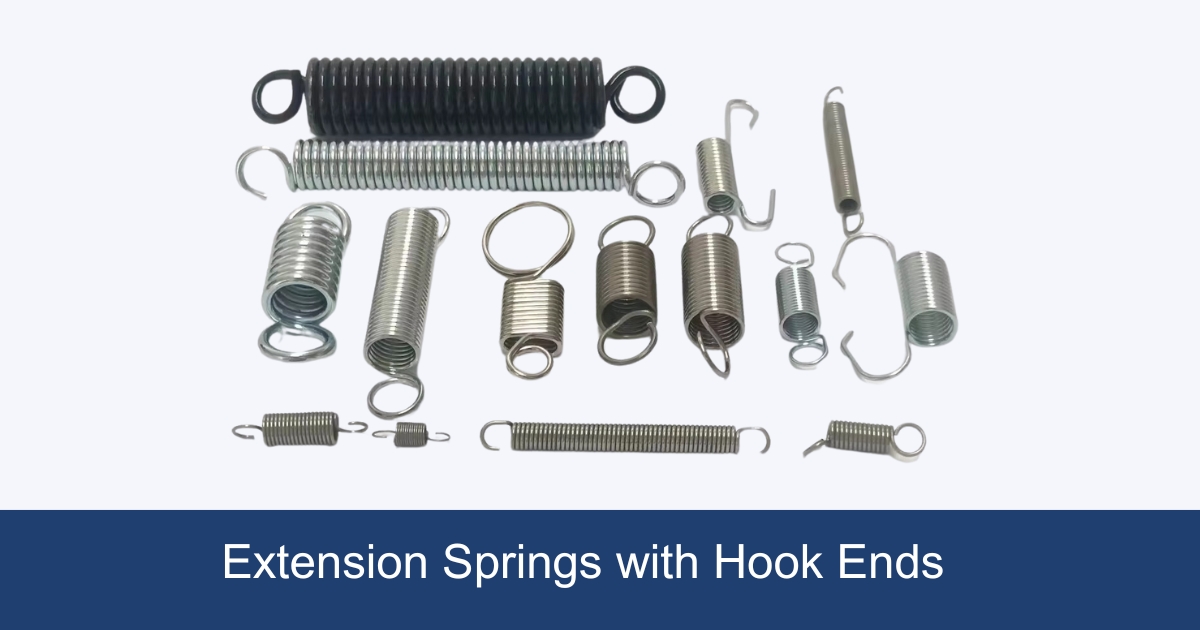Navigating through the complexities of double torsion spring design demands a comprehensive guide, from understanding their fundamental principles of torsional springs to exploring the advanced techniques employed by double torsion spring suppliers in manufacturing springs and integrated springs.
This article endeavors to demystify the manufacturing steps for torsional springs and extension springs, including how to make a double torsion spring from steel, spotlighting the pivotal stages from determining specifications to rigorous inspection and testing. Each phase is critical, designed to equip professionals and enthusiasts alike with the knowledge of the manufacturing process to manufacture or seek quality double torsion springs made from wire and coil, tailored to their precise end needs.

Understanding Double Torsion Springs
Double torsion springs are a specialized type of coil torsion springs, distinguished by their unique wire design and end functionality. These coil springs are essential in applications where high torsional forces are required, such as in automotive suspensions, industrial machinery, and consumer products with end performance.
Material Selection
Selecting the appropriate materials for double torsion springs, including coil and end components, is a pivotal step in ensuring their performance, durability, and application suitability. Here’s a detailed breakdown of common materials used in spring fabrication and their specific properties, including mechanical spring machinery, spring manufacturing technology, and the spring manufacturing process.
-
High Carbon Spring Wire: Known for its high tensile strength and good fatigue life, making it suitable for heavy-duty applications.
-
Chromium-Vanadium Steel: Offers excellent heat treatment capabilities and a good balance between hardness and toughness, ideal for springs requiring high stress resistance.
-
Stainless Steel (304, 302, 316): These are preferred for their corrosion resistance and strength, with 316 providing enhanced corrosion resistance in harsh environments.
-
Music Wire: Highly regarded for its high tensile strength and fatigue resistance, often used in high-stress applications.
-
Non-ferrous Alloy Wire: Includes materials like Beryllium Copper, which provides excellent electrical conductivity and fatigue resistance.
-
Exotic Alloys (Inconel, Monel, C276): These materials are chosen for environments involving extreme temperatures or corrosive substances.
Incorporating the right material not only enhances the functionality of the double torsion springs but also extends their operational life, making material selection a critical step in the manufacturing process.
Determine Specifications
To ensure that double torsion springs meet the required performance and application standards, it is crucial to determine precise specifications. These include measurements and material characteristics of single torsion springs that influence the spring’s functionality and durability.
| Specification | Range/Value | Importance/Function |
|---|---|---|
| Wire Diameter | 0.012 to 0.135 inches (0.30 to 3.43 mm) | Affects spring rate and strength |
| Outer Diameter | 0.078 to 1.755 inches (1.98 to 44.61 mm) | Crucial for fitting into specific spaces |
| Inner Diameter | Calculated from outer diameter and wire size | Important for applications involving a mandrel |
| Body Length | 0.042 to 7.5 inches (1.07 to 190.5 mm) | Total length of the spring |
| Leg Length | 0.224 to 2.2 inches (5.7 to 55.9 mm) | Critical for connecting to other components |
| Number of Coils | Influences spring rate | More coils, lower rate |
| Leg Angle | 0 to 180 degrees | Determines potential rotational movement |
| Spring Rate | 0.034 to 10.34 in-lbs./deg. (0.0038 to 1.18 N-mm/deg.) | Torque per unit of angle |
| Max. Torque | Up to 144.2 lbs (639.6 N) | Maximum load without permanent deformation |
| Max. Deflection | Up to 479.6 degrees | Maximum safe angular movement |
Coiling Process
The coiling process involves using a CNC coiling machine, which precisely winds spring materials into single torsion springs and the desired coil shape with spring coilers. The machine is programmed to produce two torsion spring coils from a single piece of wire, winding them in opposite directions to form the double torsion springs.
Connecting Coils
The two coils are connected at the center. The type of connection depends on the application:
-
Small Bridge: Minimizes friction and is used when the spring operates in a limited space.
-
Large Arched Bridge: Provides greater stability and is used in applications where the spring is subjected to higher forces.
Leg Formation
The legs of the springs are formed to fit the application’s requirements. This step may involve:
-
Bending: The wire is bent to create specific leg shapes, such as hooks or straight torsion legs.
-
Swaging: The ends of the wire can be flattened or shaped to provide a better mounting surface.
Heat Treatment
The heat treatment process for double torsion springs is pivotal in enhancing their mechanical properties, such as strength, elasticity, and overall durability. This process involves heating the springs to a specific temperature and then cooling them under controlled conditions. The precise temperatures and cooling rates are carefully selected based on the material composition and desired properties of the springs.
In the second stage of heat treatment, the springs may undergo tempering, a technique used to increase the toughness of the metal. This involves reheating the springs to a lower temperature after they have been quenched, thereby relieving stresses and reducing brittleness while maintaining the strength gained from the initial heat treatment.
Specifics of Heat Treatment for Various Materials
Different materials used in the manufacture of double torsion springs require specific heat treatment parameters to achieve optimal results. Here’s a brief outline:
| Material | Annealing Temperature | Quenching Medium | Tempering Temperature |
|---|---|---|---|
| High Carbon Spring Wire | 800°C – 850°C | Oil | 400°C – 450°C |
| Stainless Steel 302 | 1040°C – 1065°C | Air/Water | 350°C – 400°C |
| Chromium-Vanadium Steel | 830°C – 860°C | Oil | 425°C – 475°C |
Surface Finishing
Surface finishing of double torsion springs is a critical step that enhances their performance, durability, and aesthetic appeal. Various methods, such as springs and spring wire, are employed depending on the application requirements and material characteristics, including torsion spring techniques and spring coiling machine processes.
The harsh environments in which these springs operate can lead to rapid deterioration if they are not adequately protected. Zinc plating is a prevalent choice for springs, providing a corrosion-resistant barrier that significantly extends the spring’s service life while maintaining its conductivity and shielding properties. This electroplating process applies a thin zinc layer to the metal, which acts as a sacrificial anode when exposed to corrosive elements, thereby protecting the underlying iron or steel.
Another effective finishing option is black oxide, which offers a minimalistic yet effective corrosion resistance primarily suited for aesthetic and minimal corrosion-resistant applications. For environments requiring more robust protection, powder coating is advantageous as it adds a thick, durable layer that shields the springs from chemical exposure and physical abrasion. This type of coating is available in a vast range of colors, enhancing the visual appeal while providing an excellent barrier against rust and corrosion, ensuring that the springs perform well throughout their expected lifecycle.
Inspection and Testing
The final step is to ensure the springs meet all specifications and performance requirements. This involves:
-
Dimensional Inspection: Verifying that the spring’s dimensions match the design specifications.
-
Load Testing: Ensuring the spring can handle the specified load without deformation.
-
Fatigue Testing: Assessing the spring’s durability over repeated cycles.
By meticulously following these steps, manufacturers can produce double torsion springs that meet the precise needs of their applications, ensuring performance, reliability, and longevity.
Supplier Selection and Maintenance
-
Choosing the Right Supplier:
-
It is crucial to select a double torsion spring supplier who is knowledgeable and has a proven track record in producing high-quality springs within realistic timelines.
-
Ongoing Maintenance:
-
Regular lubrication and inspections for wear and tear are essential to maintain the longevity and functionality of double torsion springs.
This structured approach to testing and maintenance ensures that double torsion springs function optimally in their respective applications, providing reliability and performance.
Conclusion
Throughout this article, the intricate journey of manufacturing double torsion springs has been meticulously unfolded, revealing not only the complexities involved in their creation but also the paramount importance of each step in ensuring their efficiency and reliability.
Discover how our expertly engineered double torsion springs can elevate your project’s performance. Contact us today to learn more.



